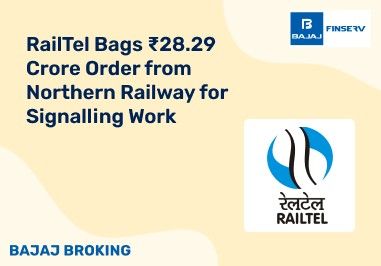The Treynor Ratio is a key metric used to measure risk-adjusted returns relative to systematic risk, often based on beta. Understanding what is Treynor Ratio and the Treynor Ratio meaning helps investors assess performance against market risk, making it especially useful in evaluating mutual funds. Unlike other ratios, it focuses solely on market-wide risks. To begin investing with insights into systematic risk and net asset value dynamics, consider starting with an open demat account.
What is the Treynor Ratio?
The Treynor ratio, often referred to as the reward-to-volatility ratio, is a crucial metric for investors aiming to evaluate the risk-adjusted performance of an investment or portfolio. Essentially, it quantifies how much excess return an investor can expect for each unit of risk taken, specifically the systematic risk represented by the beta of the asset. The Treynor ratio meaning derives from its development by economist Jack Treynor, who significantly contributed to the Capital Asset Pricing Model (CAPM). Understanding what is Treynor ratio is vital for both novice and experienced investors, as it enables them to assess whether an investment’s returns justify the inherent risks. To harness its full potential, investors can utilise the Treynor ratio in conjunction with other metrics, such as the Sharpe ratio, to make informed decisions. By integrating the Treynor ratio into their investment strategy, investors can better navigate the complexities of market volatility, thus enhancing their overall portfolio performance.
Understanding the Treynor Ratio in Detail
It is crucial to understand what is treynor ratio meaning. The Treynor ratio is a performance metric that focuses specifically on systematic risk rather than total risk, allowing investors to gauge how well an asset or portfolio has performed relative to its inherent market risk. This makes the ratio particularly useful for assessing mutual funds and diversified portfolios where market factors can significantly impact returns. The ratio calculates the excess return—returns beyond a risk-free rate—per unit of risk, represented by beta. In simpler terms, the Treynor ratio provides insights into how effectively an investment has compensated for the risk taken. A higher ratio indicates better risk-adjusted performance, making it easier for investors to compare different securities with similar risk profiles. This targeted approach allows for more nuanced evaluations of performance, helping investors understand whether their chosen assets deliver appropriate rewards for the risks undertaken. To optimise your investment strategy, you should consider calculating the Treynor ratio for your mutual funds as part of a broader investment assessment.
How is the Treynor Ratio Calculated?
Calculating the Treynor ratio involves a straightforward formula that divides the excess return of an asset or portfolio by its systematic risk, represented by beta. The formula can be summarised as follows:
Treynor Ratio = (Rp - Rf) ÷ βp
Here, Rp is the rate of returns from the asset or portfolio, Rf represents the risk-free rate of return and βp is the beta of the portfolio, indicating its volatility relative to the market. For instance, if a mutual fund generates a 16% return while the risk-free rate is 5%, and its beta is 1.4, the calculation would be as follows:
Treynor Ratio = (16% - 5%) ÷ 1.4 = 7.86%
This resulting Treynor ratio of 7.86% illustrates the excess return earned per unit of risk taken. By inputting the appropriate values into this formula, investors can assess the risk-adjusted performance of various investments, aiding in making informed decisions about portfolio allocation and management. This metric is particularly beneficial for those looking to open Demat account for trading in stocks and mutual funds.
How To Interpret the Treynor Ratio?
Interpreting the Treynor ratio meaning is essential for making informed investment decisions. A higher Treynor ratio indicates that an asset or portfolio has generated better returns for the level of systematic risk taken, while a lower ratio suggests that returns are inadequate relative to the risks involved. For example, if a mutual fund presents a Treynor ratio of 7.86%, it indicates that for every unit of systematic risk, the fund has returned 7.86% in excess. This interpretation helps investors align their expectations with actual performance, allowing for more strategic investment choices.
Additionally, investors can utilise the Treynor ratio to compare various investments within the same risk category. This comparative analysis helps to identify which assets offer superior risk-adjusted returns, enabling investors to optimise their portfolios effectively. By incorporating the Treynor ratio into the broader evaluation of an investment strategy, investors can refine their choices, making them more likely to achieve desired financial goals.
How is the Treynor Ratio Useful?
The Treynor ratio meaning serves multiple functions that are invaluable to investors looking to enhance their portfolio performance.
Portfolio Optimisation
The Treynor ratio is instrumental in optimising your portfolio by identifying assets that deliver high-risk-adjusted returns. Investors can strategically select securities that not only offer attractive returns but also justify their associated risks. This facilitates a more balanced approach to investment management.
Comparing Different Investments
Utilising the Treynor ratio allows investors to compare different investments effectively. A higher ratio indicates superior risk-adjusted performance, making it easier to identify which assets will contribute positively to overall portfolio returns. This method is particularly useful when evaluating multiple mutual funds with varying risk profiles.
Evaluating the Risk-Adjusted Performance
Assessing the risk-adjusted performance of an investment is a primary use of the Treynor ratio. By understanding whether the returns earned justify the risk taken, investors can make more informed decisions about their asset allocation. This clarity enables them to align their financial goals with realistic expectations based on risk-adjusted returns.
What Are the Limitations of the Treynor Ratio?
While the Treynor ratio is a valuable metric, it is essential to recognise its limitations to avoid potential pitfalls in investment decision-making.
No Way to Quantify the Comparison
Although the Treynor ratio enables comparison between investments, it does not quantify how much better one asset is compared to another. This lack of precision may lead to challenges when determining the marginal advantages of different securities, limiting its effectiveness as a standalone metric.
Not Meaningful for Assets with Negative Beta
The ratio's reliance on the Capital Asset Pricing Model (CAPM) means it is not very meaningful for assets with negative beta. These investments may not exhibit the expected linear relationship between risk and return, rendering the Treynor ratio less applicable in such cases.
Dependence on Historical Data
Since the Treynor ratio is calculated using historical data, there is no guarantee that past performance will be indicative of future results. Investors should be cautious, as relying solely on this ratio may lead to misguided expectations about an investment’s future risk-adjusted returns. Using it in conjunction with other metrics will provide a more comprehensive analysis.
What Is the Difference between Treynor Ratio and Sharpe Ratio?
Both the Sharpe Ratio and the Treynor Ratio are key metrics used to evaluate and compare the risk-adjusted returns of stocks, securities, portfolios and mutual funds. However, they differ in several important aspects, as highlighted below.
Particulars
| Treynor Ratio
| Sharpe Ratio
|
Meaning
| The Treynor Ratio meaning focuses on measuring risk-adjusted returns based on beta, a measure of an asset’s systematic risk.
| This ratio assesses risk-adjusted returns based on the standard deviation of the asset or portfolio.
|
Risk Metric Used
| Utilises the portfolio or asset beta to calculate risk.
| Uses the standard deviation of the asset or portfolio as the risk metric.
|
Nature of Risk Measured
| Primarily measures systematic risk – the type of risk that impacts the entire market and cannot be diversified away.
| Considers both systematic and unsystematic risk, making it more comprehensive for risk analysis.
|
Best Used For
| Suitable for evaluating an investment’s performance in relation to its systematic risk, especially when assessing funds with diversified assets.
| Useful for assessing an investment’s performance in relation to its total risk, including both market and individual risks.
|
For investors considering their options and aiming to improve returns, understanding what is Treynor Ratio can provide insights into systematic risk, especially when selecting securities within a net asset value-based framework. Tools like the Treynor Ratio and Sharpe Ratio help guide investment decisions, especially in markets where risks vary widely. To start investing in a well-informed manner, consider opening a demat account.














